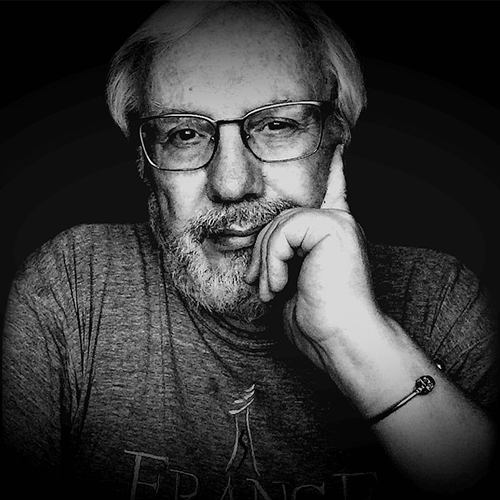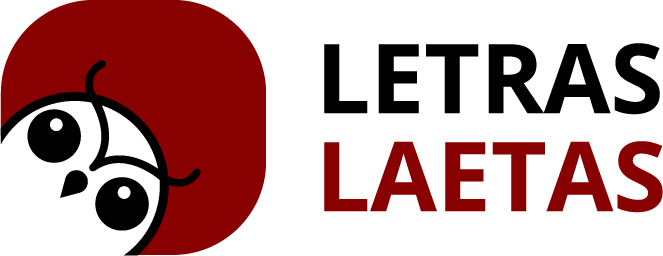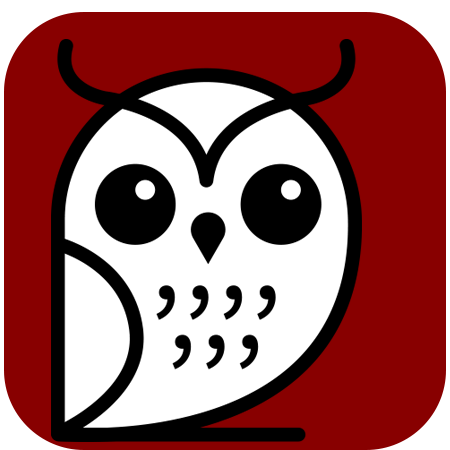To answer the question of what a publisher does, it is necessary to understand the changes that the publishing industry has undergone. We now know books and magazines as completely normal objects, but this was not always the case. In this article, I tell you about my experience as an editor of books and print and digital magazines.
About the way we write, edit and print
Johannes Gutenberg would have to be a name revered by humanity. While it’s not entirely clear whether this 15th-century German is actually the inventor of the printing press (we have a president who believes the Aztecs invented it), so far no one has taken that credit away from him. Gutenberg would have invented the first machine to print books in series around 1440 and with it he changed the course of history.
From woodcut to print
It is true that in the remotest antiquity there were ways of reproducing the various scripts of the world. For example, 400 years before Christ, the Romans used clay molds; in the eleventh century the Chinese used porcelain pieces to make reproductions; not to mention the copyist monks of the Middle Ages. However, the invention of the man born in Mainz in 1399 changed the process of making books. Before him, these were made by means of xylography, a technique with which a craftsman engraved on a wooden board the words or drawings that had to be reproduced. Apart from the fact that it was a very laborious job, when any piece of that wood was worn or part of the content was changed, it was necessary to rebuild the entire mold.
What the then blacksmith did was perfect those printing techniques, by melting each of the letters of the alphabet separately in metal and putting them one after the other. In this way it was possible to compose the pages faster and the molds could be reused to form other pages. As easy as it reads, it represented a revolution that from then on allowed the dissemination of culture until it reached the massive levels of today.
During the following centuries, the invention of the good Johannes was perfected and already in the 19th century the printing press began to become industrial. The first large print runs were born, which throughout the 20th century became commonplace and made the book a product within everyone’s reach.
Reading makes the editor
To be an editor, you have to read. Read books, magazines, comics… read as much as possible. I belong to a generation that was born when books were already a perfectly normal object. I came into the world in the mid-fifties of the last century and from a very young age I had contact with these wonderful objects printed on paper and with covered cardboard covers (or slightly thicker paper). My maternal grandmother gave me my first book in 1962, when I was seven years old, a volume that I still have in more or less good condition. It was Heart: A child’s diary, the classic of Italian literature written in 1886 by Edmundo de Amicis.
The spell was immediate. I read and reread the book until one of my mother’s sisters gave me The Germ Hunters by Paul de Kruif and then I got my hands on the abridged versions (edited by Novaro) of The Adventures of Tom Sawyer by Mark Twain, Ben-Hur by Lewis Wallace and Little Women by Louisa M. Alcott. Those were the first books I had and with which I started my personal library, which, more than half a century later, reaches some 1,500 volumes. Contact with reading made me interested in writing as well. My first attempt to be a writer happened in a most delirious way, when I was twelve or thirteen years old.
The ideological power of the press
A cousin lent me a pocket book published by Populibros La Prensa: The Bismarck. The novel by the German Frederick Zhur recounted the ups and downs of a German battleship in World War II. Contrary to what we had been told in school and in the media, in this story the heroes were the Nazis and the enemies were the Allied countries, mainly Great Britain and the United States of America. Since I was very impressionable at the time, I took the bait. Not only that: I also decided to write my own novel… about a heroic German ship fighting the Allies.
As I did not want the plot to be identical to that of The Bismarck, I invented another one that I assumed was different. In my naive delirium and my candid ignorance, I invented a scene in which the protagonist of the story was attacked on the deck of the ship by two American or British spies (I don’t remember exactly) and when they were about to assassinate him, someone came to his rescue, killed the two guys, and saved the narrator’s life. So I wrote something like: “Bewildered, I looked through the shadows at my savior and was amazed: it was Hitler.” I know: horrible.
When I showed what I had written (by hand, in a lined notebook) to my cousin Javier (the same one who had lent me the book), he was scandalized, he told me that I could not write such things, much less put Adolf Hitler like hero. Needless to say, that’s where my first attempt to be a writer ended (Vargas Llosa dixit). I have no idea what happened to the manuscript, but I suspect my cousin confiscated it and burned it.
How I learned the editor’s craft
Although at that time I gave up the idea of being a novelist and a year later I began to play the guitar and compose songs, my love of reading not only did not stop but became a habit (or a vice?) that He would accompany me from then until now. I became a voracious reader of literature, but since I was also beginning to become a leftist (something greatly influenced by the comic strips and books by cartoonist Eduardo del Río, Rius, in addition to the ideas of my brother Sergio, ten years older than I and a convinced socialist), in the late sixties and early seventies of the last century I also devoured many books on Marxism, communism and historical, political and social criticism that Sergio himself gave me).
A lyrical-literary youth
My goal was to be a musician and spread my ideas of gauche (with certain doses of hippy) through the songs I wrote. With my friends, the brothers Federico and Adolfo Cantú, I formed the acoustic trio Octubre in 1972 and we even had some appearances on television. But the music thing goes beyond the subject of this text, so let’s return to the matter that brought us here.
Because of those twists and turns that life takes, I had to abandon my desire to be a musician and after teaching for two years, in 1979 I entered the publishing industry almost without intending to, as a comic strip writer (that’s another story too) and editor of Natura magazine, from Editorial Posada.
By then, I had been out of school for eight years (I dropped out in the second year of high school, when I was studying in Prepa 6 at UNAM). Despite my love for books and magazines, I had no idea what editorial work was, but Posada’s owner, Mr. Guillermo Mendizábal Lizalde, and its editorial director, Ariel Rosales, saw potential in me. And so I entered what in practice were my true career and my true university.
A legendary publishing house
At Editorial Posada (a company of absolute legend), I learned everything I had to learn about the art of publishing magazines and books, especially the first ones. I started, yes, as an editor at Natura (a monthly magazine specializing in naturism, vegetarianism, natural medicine, ecology, etc. that had been founded by none other than my then guru: Rius) and very soon I rose to editor-in-chief and later to its director.
How did we make magazines in the 80s?
The process for producing each issue of the magazine today might seem primitive and strange, even extravagant. Think that personal computers did not yet exist, much less digital publishing. We wrote everything on mechanical typewriters, although later the first electric machines arrived. The external collaborations were given to us directly by the writers and reporters, although later faxes appeared that allowed texts to be sent remotely. Once the text was typed on paper, we passed it to the typography area (where those who typed were mostly women) and from there it went directly to the design area. Designers worked by hand, pasting (literally: with glue) the type columns and cut-out photos and illustrations. This is how the pages of each number were formed before going to print.
From editor to journalist
I worked that way until I left Posada at the end of the 1980s (where in 1988 I was able to publish my first book, the journalistic investigation with a clear critical stance against nuclear energy Más allá de Laguna Verde, with a cover by Rius!). From that moment on, I stopped being an editor to become a reporter. I collaborated in the most diverse publications (from cultural to dedicated to commercial fishing) and thus I learned the job of journalist, in practice and on the fly.
Thanks to this I was able to cover genres such as interviews, chronicles, reports and musical criticism, which also opened the doors for me to daily newspapers and I managed to collaborate in several of them until I landed in El Financiero, in 1991, as a columnist for the cultural section directed by Víctor Roura, where I would remain until 1997, with my column “Low Budget”, and years later, in Milenio Diario, where I would be for 18 years (from 2000 to 2018), with my columns “Cámara Húngara”, by political theme, and “Gajes del orificio” on musical issues. Since 2009 I have been the editor of “Acordes y descordes”, the music site of Nexos magazine.
A national rock magazine
Let’s go back in time again. In the early 1990s, more work was being done with computers. It was a time of transition within the publishing industry. In the beginning, articles were still usually typed and delivered in person or by fax. But the design was increasingly carried out from PCs or the first Macs. By the middle of that decade, computerization was almost total, both in the production of books and in newspapers and magazines. But the Internet did not yet exist, not as a mass medium.
The origin of La Mosca
In 1994, my life took a big turn. A year before, I proposed to the publisher Jaime Flores the publication of a rock magazine, an old dream that I had since my time in Posada. The project was accepted and in February 1994, La Mosca en la Pared appeared, of which I was the director. My experience fifteen years ago, as editor of Natura, was absolutely useful to me and thanks to that school, I knew how to give shape and structure to my idea.
La Mosca would last fourteen years and achieve a transcendence that I would never have imagined. Today, the publication continues to be a benchmark and a cult magazine that tens of thousands of people throughout the country remember with pleasure and nostalgia (I have met people who have the complete collection in Guadalajara as well as in Mérida, in Pachuca than in Torreón, in Ensenada than in Monterrey, etc.).
For reasons that do not come to mind at this time, the magazine disappeared in 2008. In the almost three decades that it had been in existence, those of us who made it had to live through various technological changes in the preparation and editorial production. We started doing it with typewriters and in the end everything was digitized and the Internet was the medium par excellence (we came to have an online version called La Mosca en la Red, still quite elementary). What there wasn’t at that time were social networks, except for email (with Hotmail at the forefront) and sites like MySpace.
The publisher in the Internet age
From Gutenberg to the Internet, things have evolved in an amazing way. Although the digital has not replaced the printed, it has determined and conditioned it. Nowadays, publishing a paper magazine is not only economically expensive but also editorially uncertain. The companies and institutions that used to buy advertising in the written press have stopped doing so, but they do not dare to fully enter the virtual editions either.
However, technology does not stand still. In one way or another, publishers (such as record companies in the case of music) have stopped imposing their will and today a writer can publish his works over the Internet, more or less independently, either as e-books or even in printed volumes. This represents a great advantage for authors (for example, in the case of royalties), although the prestige of being published by certain publishing houses still has weight. My two well-known novels (Matar por Ángela, from 1988, and Emiliano, from 2017), were published as printed books, while my third novel, La suerte de los feos, this year was published as an electronic book.
In conclusion…
Where is the world of books going and everything that has been printed and tangible for centuries? Hard to say. Today it is still possible to have a traditional library at home, but you can also have a huge virtual library on your smartphone. Scary or fascinating? I do not know. Perhaps both.

Hugo García Michel
Hugo García Michel was born in Tlalpan, Mexico City, on March 26, 1955. Musician, journalist, writer and editor. Coordinator of “Acordes y descordes”, music section of Nexos magazine. Director of the magazine La Mosca en la Pared (1994-2008). Author of the books Más allá de Laguna Verde (1988), Matar por Ángela (1998), Cerca del precipicio (2012), Emiliano (2017), La suerte de los feos (2022) and the solo album Nunca es tarde (2021).


